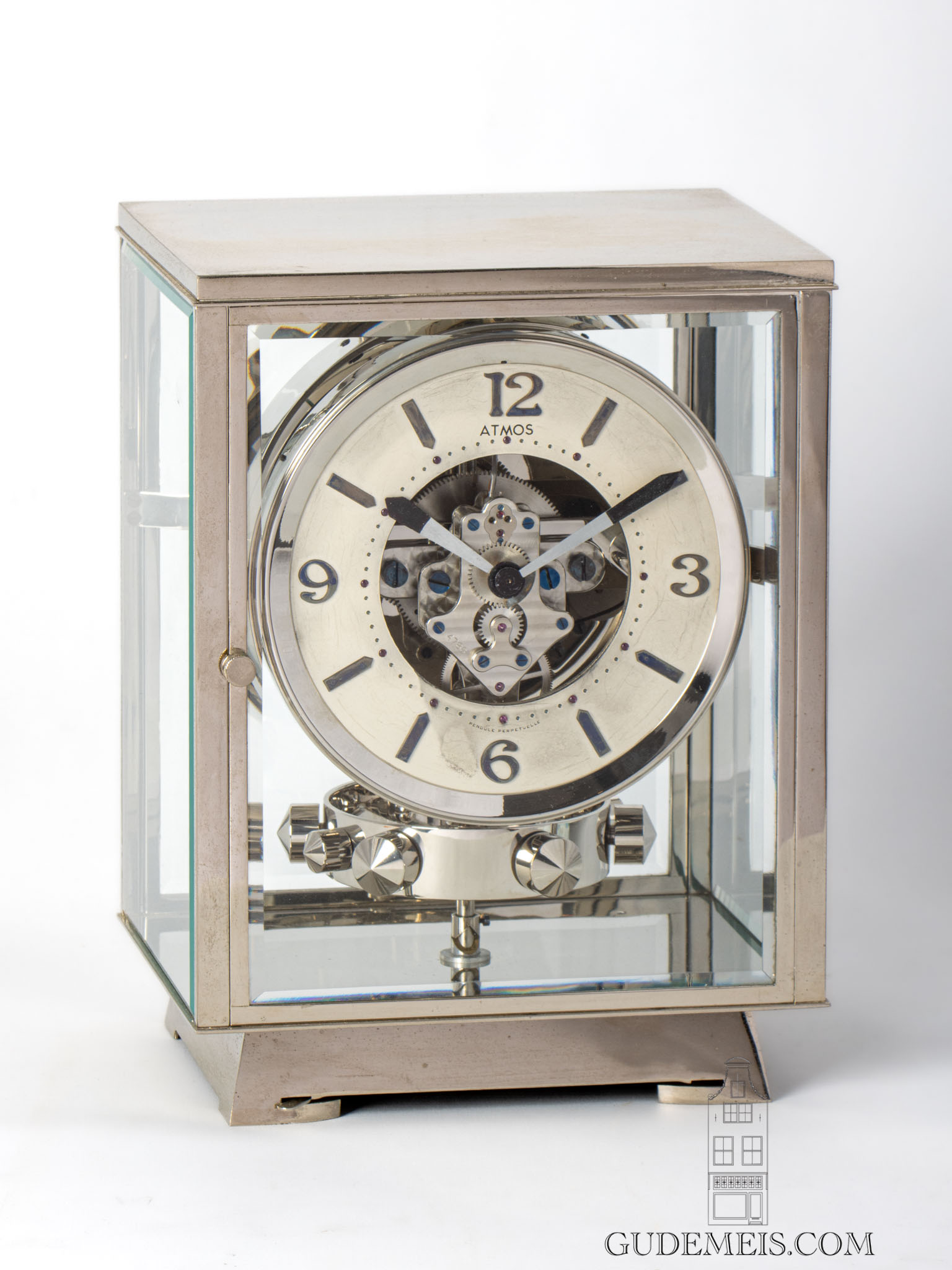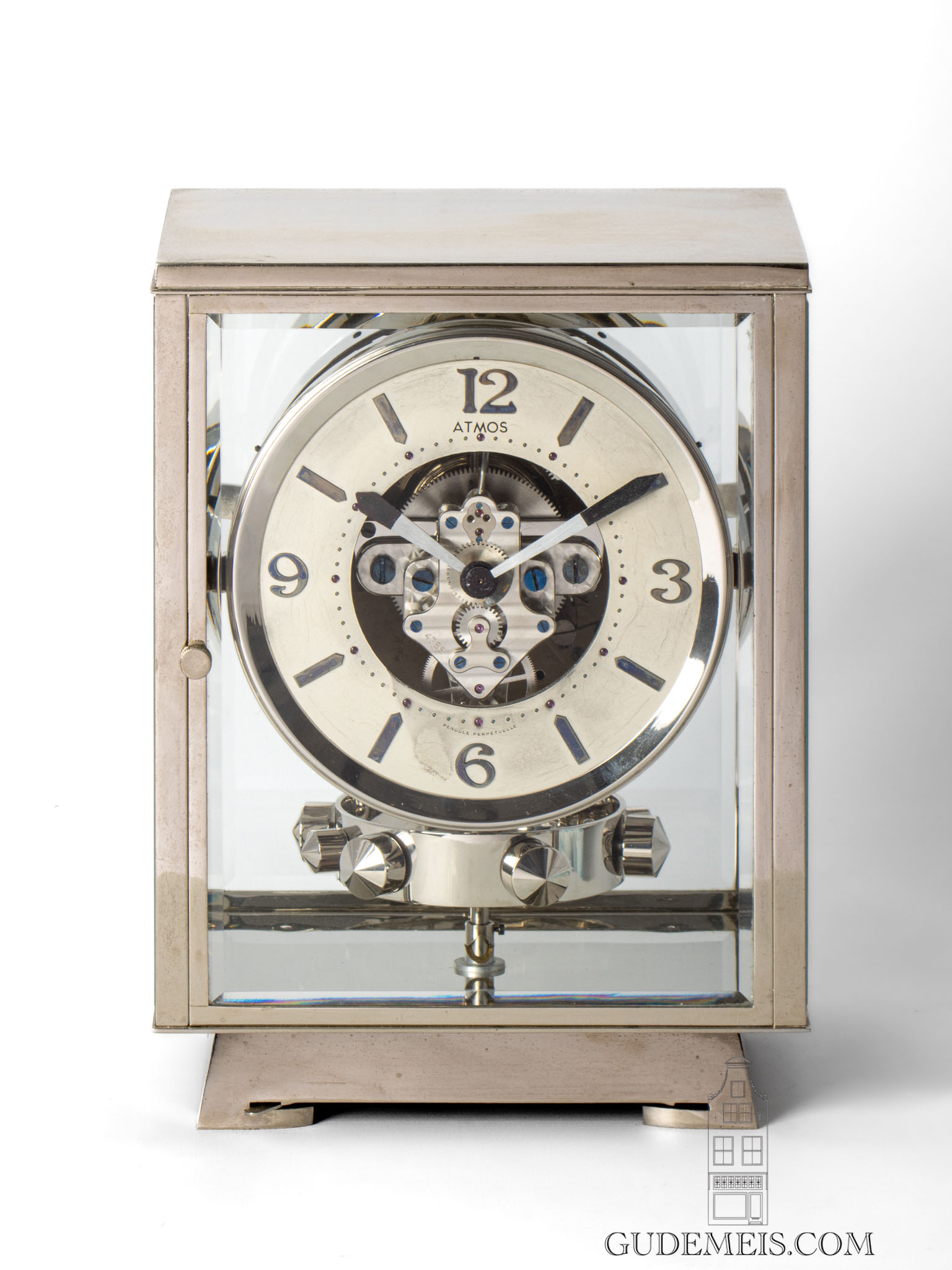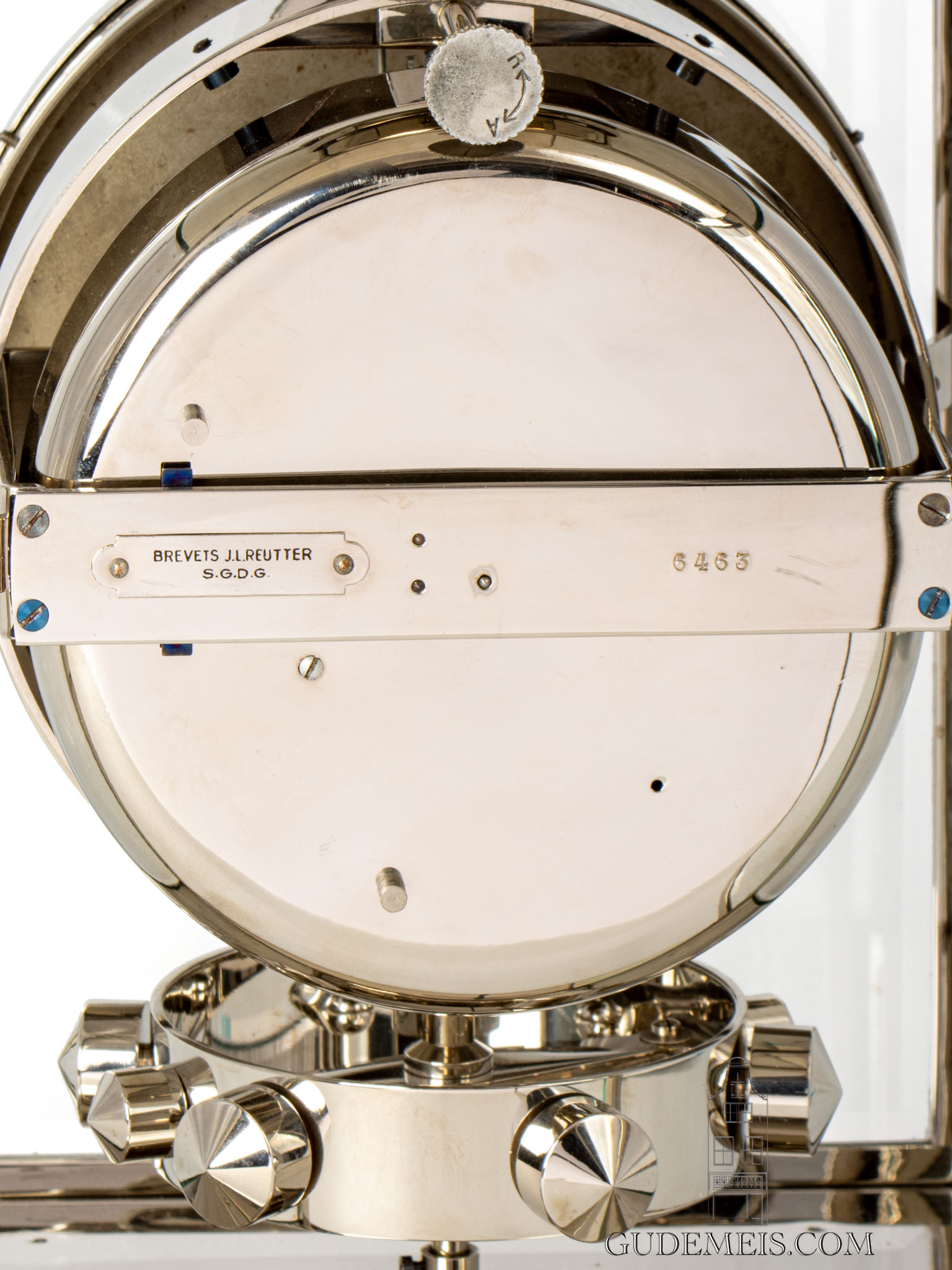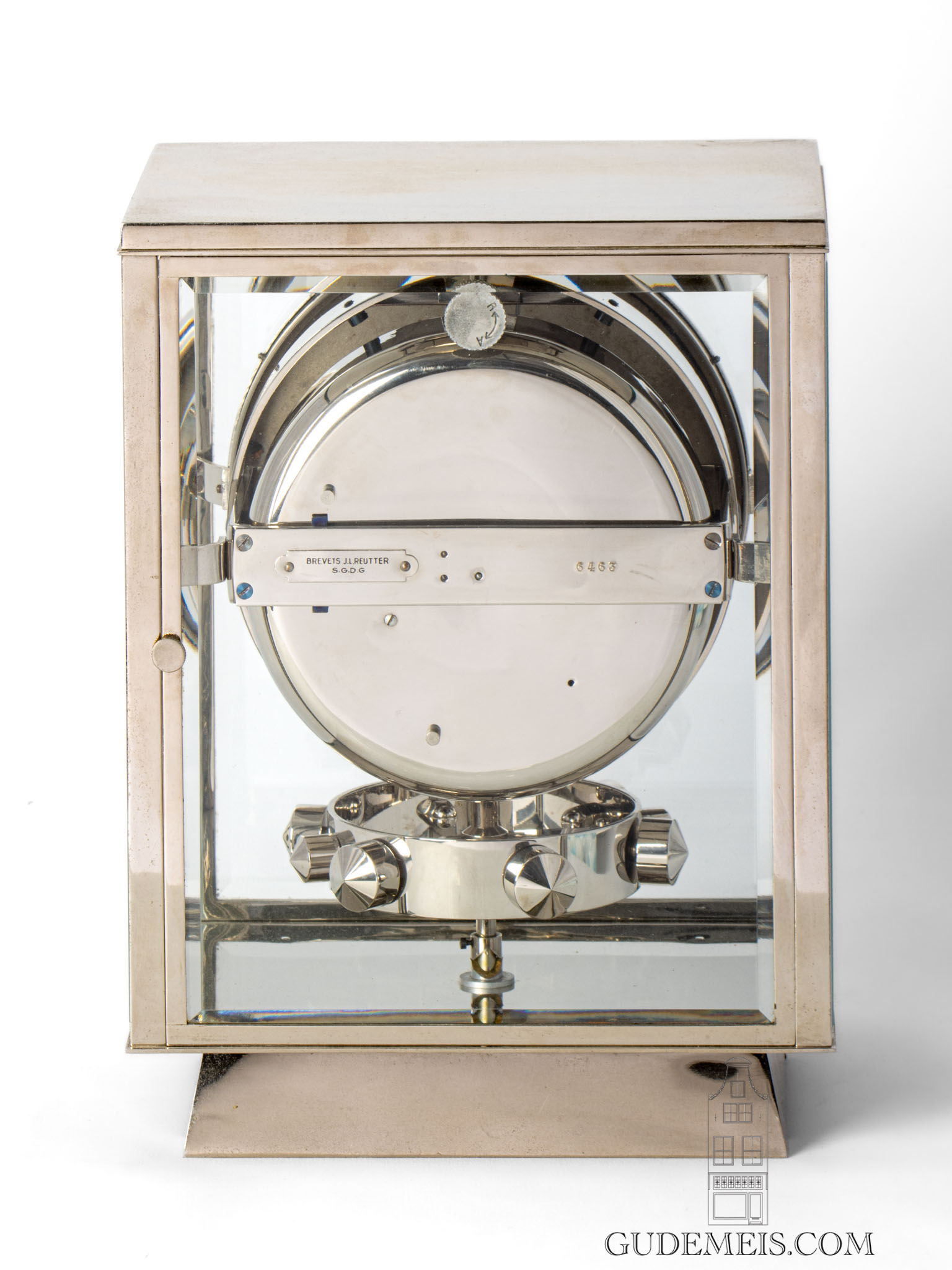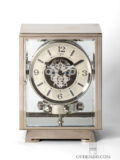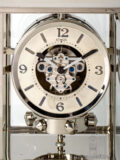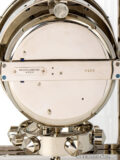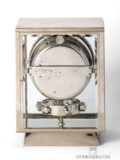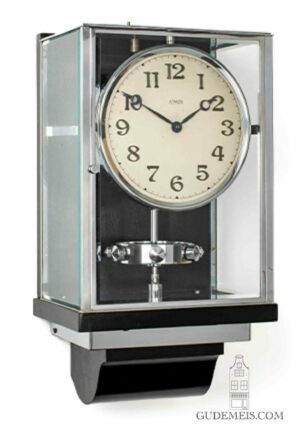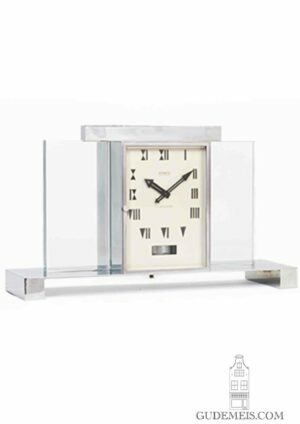A French Art Deco nickel plated Reutter patent atmos clock model RA2, circa 1934
Description
Reutter patent Atmos
In 1927 Jean-Léon Reutter created his first prototype clock which driving spring is wound by temperature changes. After a number of adaptions and improvements a commercial production line of the Reutter patent Atmos was started up in the middle of 1929. There were a number of inventions that made this technical marvel possible. He used a torsion pendulum and made the suspension wire from elivar, an alloy insusceptible to temperature changes, which improved the precision very much. The movement was finely made and executed with ruby end stones causing it to need very little energy. In fact, the clock only needs 1/1000 of the energy that a conventional movement needs. These improvements were combined with his winding mechanism. This consists of a drum which can turn between two blocking pins. In the drum there is a U-shaped glass tube filled with mercury and ammonia gas of which one part is insulated. By changes in temperature the ammonia gas expands or retracts in comparison to the gas in the insulated half. This causes the mercury to shift which motion turns the drum. This turning winds a spring which drives the mechanism.
Between 1930 and 1938 these clocks were produced under the direction of Reutter. After that Jaeger -LeCoultre took over the patent. There are different versions of cases and there are variations in these types of cases. The RA2 model is a nice example of the Art Deco style with its geometrical and nickel plated design. Another attractive feature is that both the movement and the slow turning balance are visisble through the glass sides.
Pendule perpetuelle
The 12-cm chapter ring has applied Arabic numerals and has ruby half hour markings. The chapter ring is inscribed Atmos below the number 12 and pendule perpetuelle above the number 6. Pendule perpetuelle means ‘perpetual clock’ a name that Reutter used since the clocks winds itself. The straight white laquered hands have black tips.
Brevets J.L. Reutter
The nickel plated movement is suspended in the case with a bracket which is numbered 6463 and has a small plaque inscribed: BREVETS J.L. REUTTER S.G.D.G MADE IN FRANCE. The large balance wheel has a revolution of thirty seconds and is executed with large adjustment screws. With a sliding clip in the base, the balance can be locked.
Nickel plated
The nickel plated case has beveled glass panels to all sides enabeling a good view of the movement. There are doors to the front and back. The whole is raised on a canted plinth. The rectangular clear design is typical for the Art Deco style belonging to the 1920’s and 1930’s.
